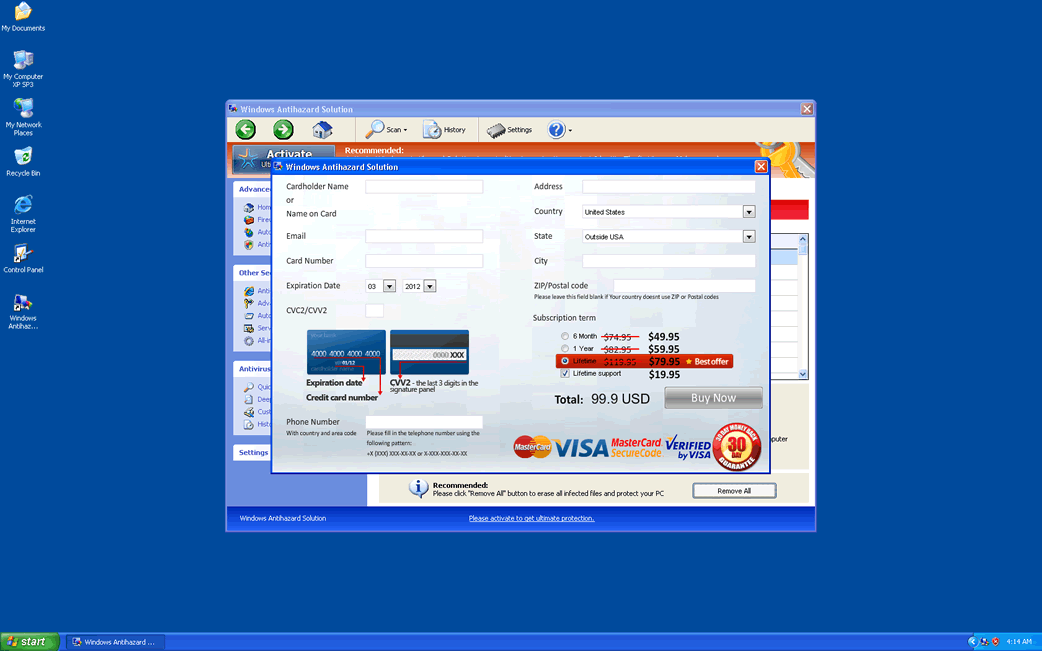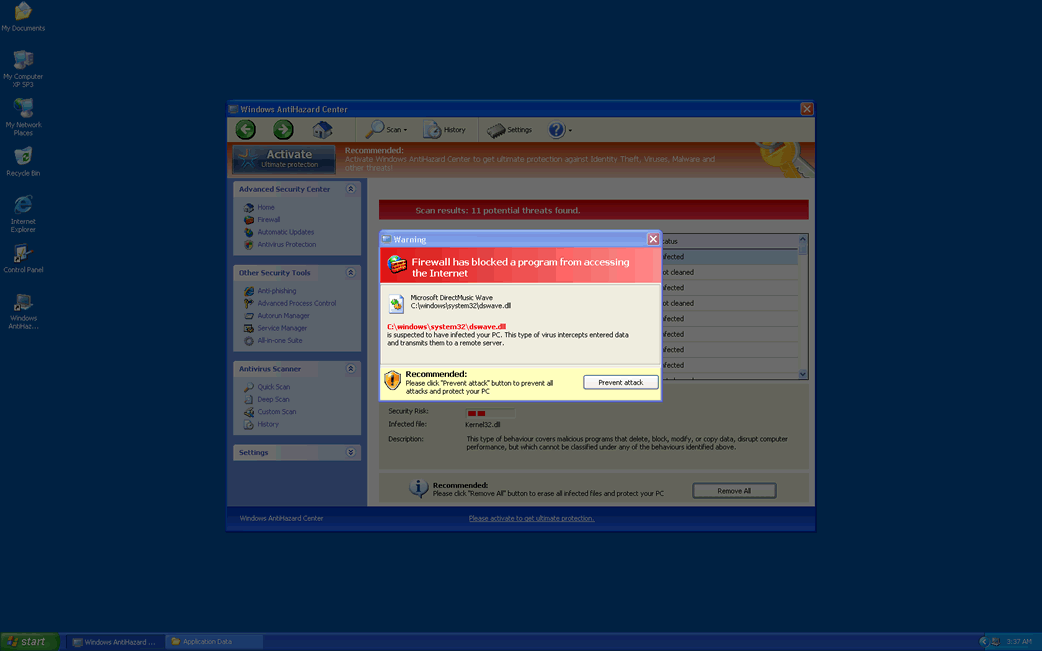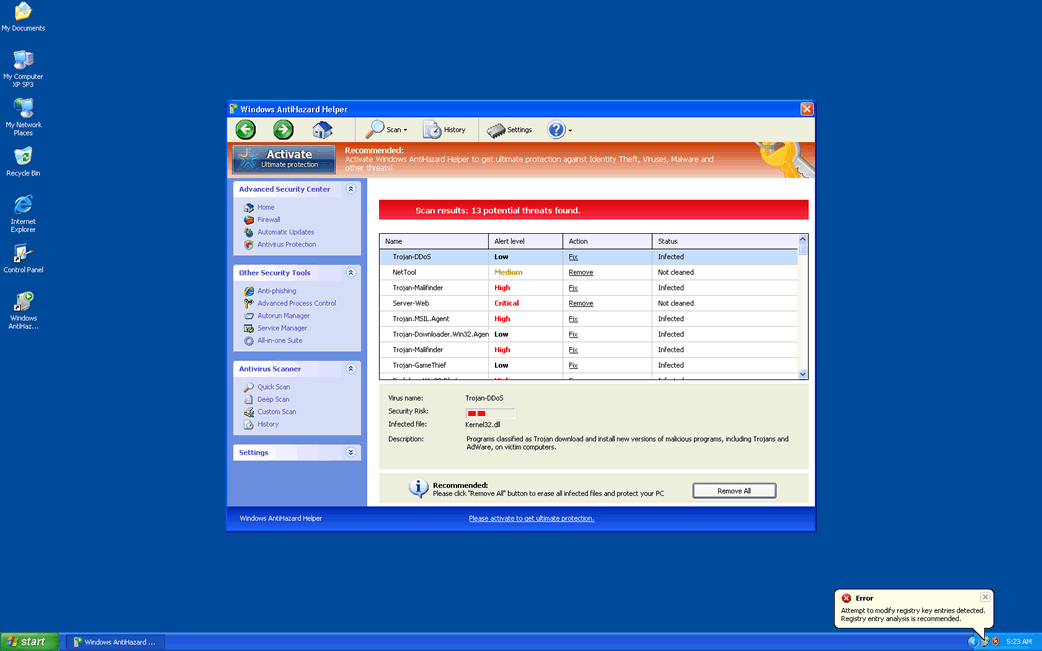Hazard Ransomware
During an investigation into potential malware threats, cybersecurity experts have encountered a particularly dangerous ransomware variant known as the Hazard Ransomware. This threatening software encrypts numerous file types within the compromised systems, effectively rendering them inaccessible to their rightful owners.
It also alters the names of these encrypted files, appending the '.hazard18' extension to the original filenames. It's essential to note that the specific number in the extension may vary, depending on the particular version or variant of the Hazard Ransomware, making it crucial for victims to identify the specific strain affecting their system. Furthermore, it's worth highlighting that Hazard Ransomware has been identified as a variant linked to the infamous MedusaLocker Ransomware family.
The threat leaves behind a ransom note titled 'HOW_TO_BACK_FILES.html,' which serves as a message from the cybercriminals. This note typically includes directions on how to pay the ransom fee to the attackers in exchange for the decryption key. The attackers utilize this note to pressure and intimidate their victims, coercing them into paying the ransom.
The Hazard Ransomware Employs Double-Extortion Tactics
The ransom note conveys several critical messages to the victim. It starts by revealing that the victim's files have been subjected to encryption using robust cryptographic techniques, namely RSA and AES encryption. This encryption renders the files inaccessible, and it is emphasized that any attempts to restore these files using third-party software can result in irreversible data corruption. In other words, the ransomware operators caution that only they possess the decryption solution, underlining their control over the victim's data.
The attackers also threatened to expose sensitive and confidential data that had been obtained from the infected systems. This adds a layer of extortion to the situation, implying that the cybercriminals have gained access to highly private information and are willing to reveal it to the public or sell it unless a ransom is promptly paid.
To facilitate negotiations, contact details are provided, including a Tor URL and email addresses (ithelp02@securitymy.name and ithelp02@yousheltered.com). However, the victim is given a strict ultimatum: the ransom amount will increase if the operators are not contacted within a limited time frame, often set at 72 hours.
It is crucial to emphasize that paying ransoms to cybercriminals is strongly discouraged for several reasons. Firstly, it does not guarantee the successful recovery of files, as there's no guarantee that the perpetrators will provide the necessary decryption key once the ransom is paid. Secondly, complying with the demands of cybercriminals only fuels their criminal activities, and there's no assurance that they won't return for more ransom payments in the future.
It is Crucial to Safeguard Your Data and Devices
Safeguarding data and devices against malware threats is a critical aspect of maintaining digital security. Here are some comprehensive steps users can take to protect their data and devices:
- Install Reliable Security Software: Start by installing reputable anti-malware software on all of your devices, including computers, smartphones, and tablets. Keep this software up to date to ensure it's effective against the latest threats.
- Regular Software Updates: Frequently update your operating system, web browsers, and all software applications to patch vulnerabilities that malware might exploit. Enable automatic updates wherever possible.
- Download from Trusted Sources: Only download software, apps, and files from official and trusted sources. Avoid unofficial app stores, torrent sites, or suspicious websites.
- Use Strong, Unique Passwords: Create strong and unrepeated passwords for your accounts, and consider using a password manager to keep track of them. Enable multi-factor authentication (MFA) wherever possible for an added layer of security.
- Educate Yourself: Remain informed about the latest malware threats and tactics. Understanding the types of threats and how they work can help you recognize potential risks.
- Be Cautious with Email: Be wary of email attachments, links, or messages from unknown senders. Avoid interacting with attachments or clicking on links unless you're certain they're safe. Be especially cautious about unsolicited emails.
- Backup Your Data: Regularly back up your data to an external device or a secure cloud service. If you suffer a malware attack, you can restore your data from backups.
- Limit User Privileges: On shared computers, restrict user accounts to standard or non-administrator roles. This helps prevent malware from making system-level changes.
- Avoid Public Wi-Fi for Sensitive Activities: Refrain from using public Wi-Fi for sensitive activities unless you utilize a virtual private network (VPN) for safe and encrypted communication.
- Regularly Scan for Malware: Periodically run malware scans on your devices using antivirus or anti-malware software to catch any threats that might have slipped through.
By following these comprehensive measures, users can significantly reduce their exposure to malware threats and enhance the security of their data and devices. It's important to maintain vigilance and regularly update your cybersecurity practices to adapt to evolving threats.
Victims of the Hazard Ransomware are left with the following ransom note:
'YOUR PERSONAL ID:
/!\ YOUR COMPANY NETWORK HAS BEEN PENETRATED /!\
All your important files have been encrypted!Your files are safe! Only modified. (RSA+AES)
ANY ATTEMPT TO RESTORE YOUR FILES WITH THIRD-PARTY SOFTWARE
WILL PERMANENTLY CORRUPT IT.
DO NOT MODIFY ENCRYPTED FILES.
DO NOT RENAME ENCRYPTED FILES.No software available on internet can help you. We are the only ones able to
solve your problem.We gathered highly confidential/personal data. These data are currently stored on
a private server. This server will be immediately destroyed after your payment.
If you decide to not pay, we will release your data to public or re-seller.
So you can expect your data to be publicly available in the near future..We only seek money and our goal is not to damage your reputation or prevent
your business from running.You will can send us 2-3 non-important files and we will decrypt it for free
to prove we are able to give your files back.Contact us for price and get decryption software.
qd7pcafncosqfqu3ha6fcx4h6sr7tzwagzpcdcnytiw3b6varaeqv5yd.onion
Note that this server is available via Tor browser only
Follow the instructions to open the link:
Type the addres "hxxps://www.torproject.org" in your Internet browser. It opens the Tor site.
Press "Download Tor", then press "Download Tor Browser Bundle", install and run it.
Now you have Tor browser. In the Tor Browser open qd7pcafncosqfqu3ha6fcx4h6sr7tzwagzpcdcnytiw3b6varaeqv5yd.onion
Start a chat and follow the further instructions.
If you can not use the above link, use the email:
ithelp02@securitymy.name
ithelp02@yousheltered.comTo contact us, create a new free email account on the site: protonmail.com
IF YOU DON'T CONTACT US WITHIN 72 HOURS, PRICE WILL BE HIGHER.'




